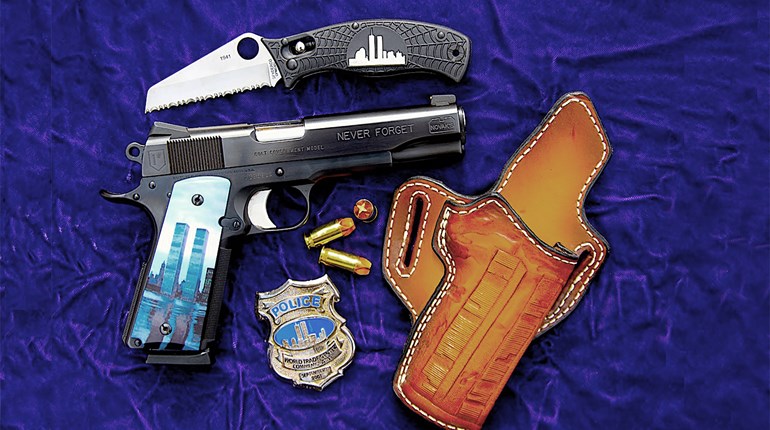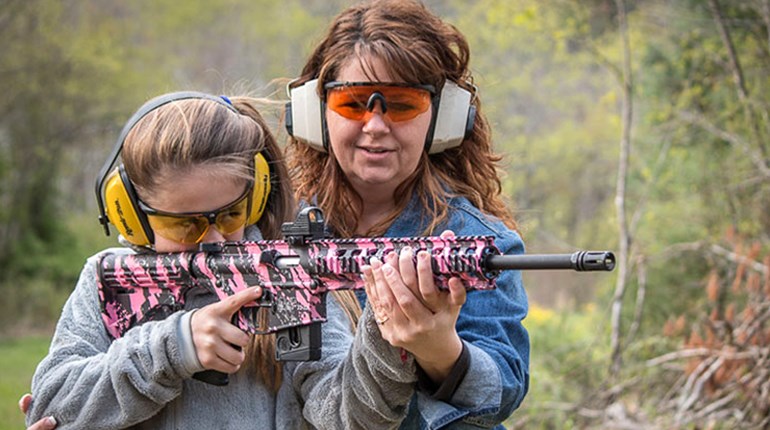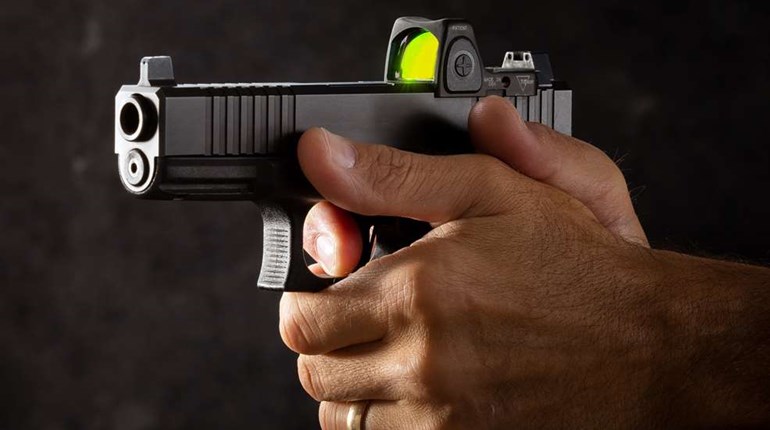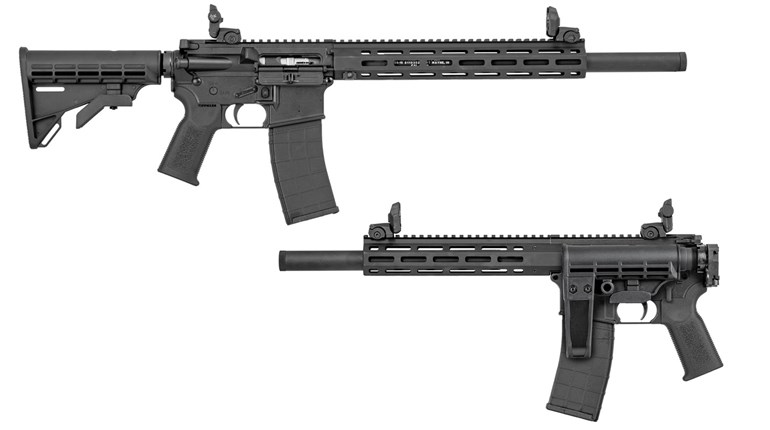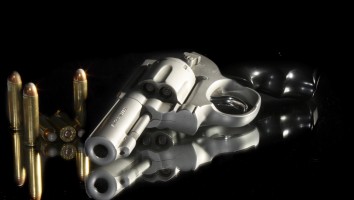
Someone once coined the phrase, "Imitation is the sincerest form of flattery." While the phase applies to almost anything, not too long ago I came across an article from a shooting periodical where the author, Jeremy Clough, took the phrase to heart by chronicling his efforts to make a contemporary version of one of my favorite custom self-defense wheelguns—the "Fitz Special."
Given my fondness for J.H. FitzGerald's creation —along with my weakness for custom handgun projects—I soon found myself unable to resist the siren's song, yet again. But, after doing a little research I didn't feel so bad. It turns out the folks at Colt were intrigued enough by FitzGerald's customization concept, that they introduced their own production snub-nose revolver in 1926, which they named the Detective Special. The newest offering in the Colt line contained a standard spur hammer along with an unaltered trigger guard, a feature that proved controversial on the Fitz Special. Some viewed the partially exposed trigger as a potential safety hazard, citing a high likelihood of snagging the trigger on clothing—such as the edge of a pocket—or how any damage to the partially remaining trigger guard could potentially render the pistol inoperable. In addition to aligning himself with the opposition of the cutaway trigger guard, in his book "Handgunner's Guide," renowned holster maker and fast-draw artist of the '50s, Chic Gaylord suggested a compromise to the controversial feature—to create greater trigger access for shooter's with large hands by narrowing the sides of the trigger guard—thereby achieving the same result as Fitz, but leaving the trigger guard otherwise intact.
(Having a hefty pair of paws myself, I found the concept interesting.) The feature came to be known as the "Half-Fitz." In fact, gun designers Paris Theodore and Charles Kelsey would incorporate a similar feature years later when creating their ASP and Devel semi-automatic pistols.
Suddenly stricken with the need for a "Half-Fitz" conversion, the question became what model of modern revolver would make a worthy parent for the project? Interestingly, the author focused his search to Smith & Wesson K-frame revolvers. At first, I considered the author's selection off the mark and somewhat blasphemous. While the goal was a contemporary version of the Fitz Special, I found the notion of using a large-frame Colts, like a Lawman, or perhaps a MKIII Trooper more appealing. Then I remembered Fitz worked on all types of handguns—not just Colts. Giving it some thought, I decided to follow the dual-pistol-packin' Irishman's lead. But, that wasn't the only reason. After examining quite a few Colt and S&W revolvers in my safe, I found something that tipped the scales in favor of Smith & Wesson: While Colt revolvers typically sport features such as better barrels and a silky-smooth cylinder lockup, Smith & Wesson wheelguns possess a shorter, double-action "throw," which is a definite plus considering the Fitz Special has a bobbed hammer, making double action the preferred firing mode.
So, why select a K-frame when the J-frame is smaller, lighter and more-concealable, especially given the company's advancements in metallurgy, as seen with its production of scandium-alloy revolvers? The answer pertains to comfort and ease of shooting. Not that I have anything against, J-frames—I own several. But, when it comes to selecting a revolver, for self-defense I firmly believe that while the Smith & Wesson J-frame may appear to be an obvious choice at first, my experience with them has proved different. It takes a tremendous amount of dedication, practice and skill to handle a small-frame snub-nose revolver accurately. Their short barrels generate substantial muzzle blast and recoil—especially in magnum calibers—while their smaller grips can make speed-draw difficult and shooting full-house +P or magnum ammunition a painful experience. Accuracy can also prove difficult to master, thanks to such things as the snub nose's truncated barrel, limited rifling and a shortened sight radius makes it difficult to discern slight variations in sight picture. Finally, I believe the snub-nose revolver carries with it another, often unaddressed negative—an ultra-short ejector rod, which results in potential failures to fully extract spent cases, forcing brass to be plucked one-by-one from the cylinder during reloads. Add a high-caliber chambering to the mix, such as .357 Mag. its high-pressure characteristics and the necessity of having to quickly jettison potentially stubborn, fire-formed brass during the stress of a gunfight, and you can see a bleak picture beginning to take shape.
Seeing the wisdom behind the author's rationale, I also decided to search for a classic Smith & Wesson's K-frame revolver for my Half-Fitz conversion. Not only would the added weight of a larger steel frame aid in taming recoil, a K frame provides more material to hang onto, in the form of either round- or square-butt grips. At first, I considered either a Model 19 Combat Magnum or its stainless steel equivalent, the Model 66. With regard to the caliber, I'm not particularly enamored with the idea of using a .357 Mag. for self-defense—not when .38 Spl. +P ammunition has a reputation of being just as effective and more manageable. Nonetheless, the idea of being able to run both calibers through the pistol was appealing. If nothing else, the notion opened the possibilities for the pistol serving as a trail gun, using the more potent magnum ammunition. However, Clough chose another model and it didn't take me long to discover the benefits.
Instead of a Model 19 or 66, Clough selected a Model 65 with a 3-inch heavy barrel. Simply put, the barrel length is a good compromise between 4-inch models, which can prove more difficult to conceal and the typical snub nose. Moreover, the added weight of Model 65's heavy barrel should offset the effects of recoil.
Lastly, being a fixed-sight revolver, the 65 is actually a more practical choice for self-defense. Finally, handguns with adjustable-sights, such as the Model 19 and 66, typically contain a relatively high front sight by design—and with it the likelihood of their snagging on clothing during the draw stroke and getting knocked out of whack. Needless to say, the author's reasoning won out and I focused on tracking down a Model 65.
Fortunately, my search was short when I learned Southern Ohio Gun had police-issued 65s in stock. Like most law enforcement trade-ins, when my pistol arrived it was in good shape. Nonetheless, a single, non-OEM part was visible: the cylinder-release latch contained the newer, re-contoured design found on current production Smith & Wesson revolvers. Given the modifications in store for this pistol, it was hardly an issue.
Regardless, my preference was for a cylinder latch with the original design. Luckily, Brownells carried what I was looking for. The pistol's screw heads were unmarred—especially around the side plate—suggesting no signs of amateur gunsmithing. A subsequent test of both its single- and double-action modes with a range rod confirmed it. To my surprise, the pistol's walnut stocks were in good shape. Placement of both medallions was solid, and each panel's checkering was still moderately sharp.
As expected, the pistol's double-action was nothing to write home about—more than 10 pounds easy. But, that didn't concern me, because I know when my local gunsmith got done it would be silky-smooth, like a vintage Colt Python. The remaining modifications were done by Novak Design, Inc.—best known for their LoMount handgun sights. I know what you're thinking: Novak's doesn't work on wheelguns. That's what I thought too. Wayne Novak confirmed it when I called to inquire about possibly duplicating Clough's Model 65. Then, to my surprise he added, "But, since you work for the NRA, go ahead—send it and we'll make an exception."
The following day, I shipped the pistol along with a letter of preferred features. A few months passed, but the word exception proved to be a severe understatement in trying to describe what I received in return. The left side of the trigger guard was narrowed from the tip of the trigger upward to accommodate me as a southpaw shooter. Gone was the ineffective, silver-colored, front sight that tended to blend into the stainless steel barrel when shooting in bright sunlight, only to be replaced by one of the company's front sight blanks. Novak rep, Charlie Pulit used the bare blade to zero the pistol at 20 yards using American Eagle 115-grain .38 Spl. +P ammo. Afterward, the new sight was cut to the proper height, drilled for a Trijicon tritium ampule and installed into a corresponding dovetail on the barrel. The .125-inch-wide replacement was a big improvement. Not only was it more effective at filling the Model 65's rear notch, which should aid in precision shooting, being solid-black it proved easier to see in both daylight and low-light conditions.
Next, the entire top of the revolver was hand-matted—a detailed texturing process taught to Wayne Novak by "the big Swede," the late Armand Swenson. Considered cosmetic by some, matting serves to reduce glare. Whether it's effective on stainless steel pistols is debatable, but it undoubtedly adds an extra aesthetic element.
Both the front and back strap of Clough's model 65 was matted and although I saw this as beneficial, Pulit talked me out of it, saying the matting process would alter the frame to such an extent that only custom grips could be used. Before returning it to me, the folks at Novak's removed the hammer spur and gave the entire handgun a carry-bevel treatment, removing all sharp edges. Finally, it was bead-blasted a fine matte-silver finish.
Upon receiving the pistol, I gave it a brief once-over—reminding myself the pistol was still in need of an action job—cased it back up and took it to my local gunsmith before any sensation of separation anxiety could begin to form. My reasoning for not wanting the folks at Novak's to do an action job on the pistol was actually twofold: First, all the other modifications were universal, in that they could apply either a revolver or semi-auto except the action job—and since revolver work was outside the company's specialty, why tempt fate? And second, I already had a local gunsmith who regularly worked magic with revolvers, so it wound up being a no-brainer. In the end, I also had the single-action cocking notch removed, making the Model 65 a double-action only revolver.
During its final phase of customization I passed the time considering replacement grips. Eventually, I decided to consult Raj Singh of Eagle Grips. The company's quality selection is what I expected in handgun grips. But more important, given Singh's knowledge of handguns, I had no doubt he would suggest a good match for my newest acquisition.
From the beginning I found myself contemplating a set of the company's Classic Walnut grips, due to my large hands. However, Singh urged me to consider a pair of their Secret Service grips, saying the design, is shorter and more concealable than the Classic Grips. Finger grooves enhance controllability, while the short grip still offered plenty of surface area for large-handed shooters like me. In the end, took his advice and opted for a pair of smooth, Secret Service grips in black ebony to compliment the pistol's matte-satin finish, suspecting the smooth variety would be less likely to dig into my hand under recoil. To go with my Novak Half-Fitz, I needed to locate an adequate holster for concealed-carry along with suitable ammunition pouches. My search paid off with Galco International. The holster I selected was a Combat Master because its molding and lack of retention strap allowed for lighting-fast draws
while a single speedloader pouch and separate cartridge carrier enabled the flexibility of either a quick reload, or topping of the cylinder with individual rounds
While quite some time has passed since completion of my Half-Fitz, I distinctly recall heads turning the first time I took it the range, achieving fist-sized groups at 10 yards and easily being able to keep groups inside a paper plate at 25 yards. In retrospect, I can't help but wonder if the reaction was due to its performance or its classy appearance. Either way, what more can someone ask for from a 3-inch, DAO wheelgun that happens to be a customized, contemporary version of an otherwise pseudo-classic Half-Fitz Special?












